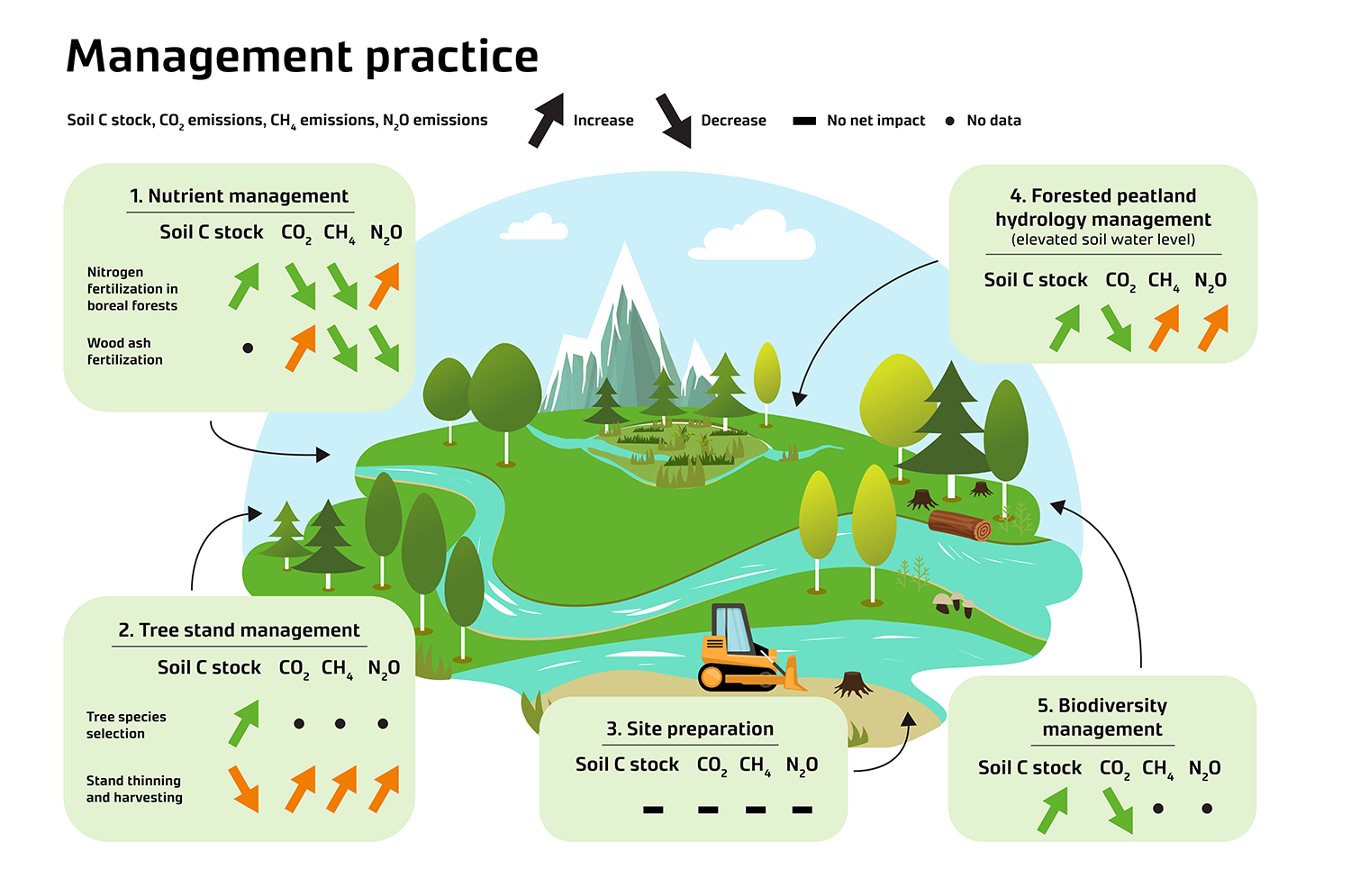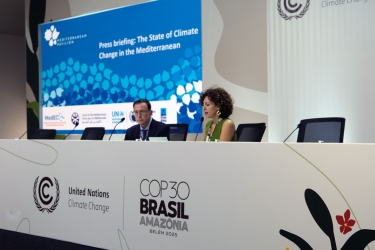Forest soils can increase climate change mitigation with targeted management

Forest soils are larger carbon stocks than the trees that grow on them. Yet global studies on forest carbon stock changes often focus on wood biomass, wood products or various offsetting effects.
As the European Union strives to find measures to achieve vital climate targets, a new policy brief from the European Forest Institute shows how considering forest soils in improved management practices increases climate change mitigation. Forest management practices can affect soil carbon stock, soil CO2 emissions, and net exchange of other greenhouse gases such as methane (CH4) and nitrous oxide (N2O). Increasing forest soils’ capacity to store carbon and reduce net GHG emissions is crucial for the EU’s target to achieve carbon neutrality by 2050.
This policy brief is based on a publication by the international, EU-funded HoliSoils project which emphasises that the European forest sector needs a comprehensive understanding of the carbon sequestration potential of soils to help design climate change mitigation measures.
“The impact of forest management on soils is less studied and is treated in a highly simplified way in decision-making, even though forest management is crucial for achieving carbon neutrality objectives for terrestrial ecosystems,” says research professor Raisa Mäkipää from the Natural Resources Institute Finland (Luke) and HoliSoils project coordinator. “Soil is the largest carbon stock in the forest, and it can be either a large sink or a source of GHGs, which are affected by forest management decisions”.
Practices which can affect forest soils include management of nutrients, tree stands, hydrology, biodiversity, and fire, as well as site preparation after harvesting or disturbance.
Recommendations in the brief include better accounting of forest soil responses to management practices, integrating their effects into existing modelling tools, and creating awareness of the importance of soil mitigation potential for climate change mitigation. The brief also calls for considering site-specific conditions for climate-smart forest management practices and reducing knowledge gaps in understanding how soil carbon balances and GHG emissions are affected by forest management, climate, biodiversity loss, and other environmental changes, as well as their trade-offs.
What is clear is that long-term soil monitoring is needed to verify targeted changes in soil carbon sequestration and reductions of GHG emissions to confirm which management practices are efficient in climate change mitigation, a goal to which the HoliSoils project is working hard to contribute.

The brief was published in collaboration with Holistic management practices, modelling and monitoring for European forest soils – HoliSoils – is funded by the European Commission’s Horizon 2020 research and innovation programme under grant agreement no. 101000289.
Photo: jurgal / AdobeStock


